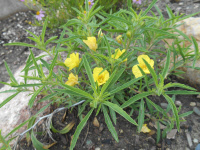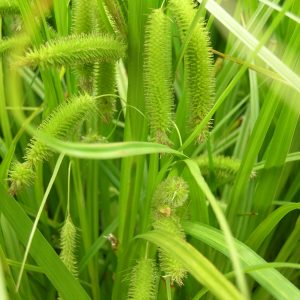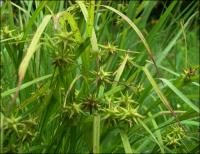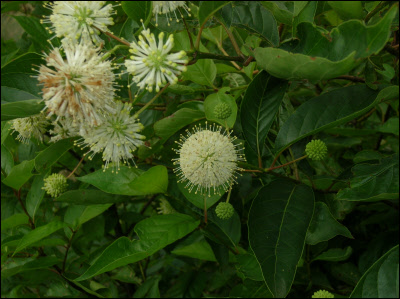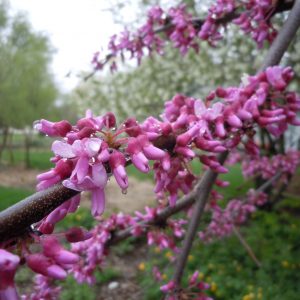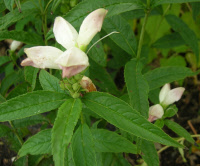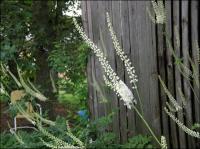Wisconsin Native
Showing 25–32 of 108 results
-
Calylophus serrulatus Yellow sundrops, Shrubby evening primrose Z 4-9
Lemon yellow silky petals bloom late spring to early fall on this tough-as-nails native
OUT OF STOCK
Lemon yellow silky petals bloom late spring to early fall on this tough-as-nails native
Size: 9-18” x 12-15”
Care: sun in well-drained soil, drought tolerant
Native: Great Plains: Central Canada to TX, Michigan to Montana, WI native1st described in 1818 by Thomas Nuttall, English planthunter who collected hundreds of “new” plants in North America. Caly is Greek for calyx; lophos for “the back of the neck; crest of a hill or helmet” serrulatus means “minutely serrate” or “saw-toothed” describing the leaf margins.
-
Campanula rotundifolia Harebell, Bluebell of Scotland Z 3-8
Its delicate appearance conceals its hardy constitution. Dainty bluish-lilac bells to 12” stems on bushy round ground-hugging foliage. Blooms from June to October. Perfect for rock gardens and borders.
Its delicate appearance conceals its hardy constitution. Dainty bluish-lilac bells to 12” stems on bushy round ground-hugging foliage. Blooms from June to October. Perfect for rock gardens and borders.
Size: 9-12" x 12"
Care: Sun to part shade in moist well-drained soil
Native: Europe, Siberia and North America, Wisconsin native
Wildlife Value: Walnut tolerantLakota ate the leaves raw and cooked and made an infusion of the roots to remedy earaches. Sir Walter Scott immortalized the Bluebell of Scotland in Lady of the Lake. Also a subject of Emily Dickinson’s poetry.
-
Carex comosa Longhair sedge, Bristly sedge Z 4-10
Ornamental dangling bottle brush spikes from May to August
OUT OF STOCK
Ornamental dangling bottle brush spikes from May to August
Size: 2-4’ x 2’
Care: Sun to part shade in wet to moist soil
Native: all of sub-Arctic No. America except western intermountain states and provinces and except Alaska.
Wildlife Value: food for caterpillars of several butterflies. Seeds provide food for wetland birdsRhizomes stabilize shorelines while plants give ducks cover and the seeds provide food. Good rain garden plant.
-
Carex grayi Gray’s Sedge Z 3-8
Cool club-like maces at the ends of stems- June to October
Cool club-like maces at the ends of stems- June to October
Size: 30" x 24"
Care: Full sun to part shade in moist or moist well-drained soil
Native: Vermont west to Wisconsin, south to Georgia and Missouri
Awards: Great Plants for Great Plains1st described in 1835.
-
Cephalanthus occidentalis Button bush, Honey balls Z 4-10
Perfectly round, white flowers perfume the air in Aug. & Sept. Red leaf stems contrast with green foliage.
Perfectly round, white flowers perfume the air in Aug. & Sept. Red leaf stems contrast with green foliage. Ships only in spring
Size: 6' x 8'
Care: Full sun to part shade in wet to moist well-drained soil
Native: New Brunswick S. to Fla. W. to CA.
Wildlife Value: Important shrub to maintain water quality and for wildlife habitat. Its roots absorb nutrients in water and reduce erosion along water's edges. Flowers attract butterflies. Birds nest in branches.Many medicinal uses for several tribes – Chickasaw, Choctaw, Kiowa, Meskwaki and Seminole, believed to remedy sore eyes, toothaches, dysentery, hemorrhages, headaches, nausea, fevers, constipation, ailments in horses and “wolf ghost sickness.” Rand 1866: “Valuable for blooming at a season when the shrubbery is bare of flowers.” Offered for sale in Bartram Garden’s 1783 Broadside, America’s 1st plant catalog.
**LISTED AS OUT OF STOCK BECAUSE WE DO NOT SHIP THIS ITEM. IT IS AVAILABLE FOR PURCHASE AT OUR RETAIL LOCATION.
-
Cercis canadensis Red bud, Judas tree. Z 4-8
In spring when we need a Dionysian jolt from winter’s hibernation the Red bud’s flowers burst open. Shameless fuchsia buds appear along the tree’s stems, before the leaves unfurl. As spring turns to summer, glossy medium green hearts, the shape of each leaf, replace the buds. Vase shaped, fast growing and blooming as a young tree.
OUT OF STOCK
In spring when we need a Dionysian jolt from winter’s hibernation shameless fuchsia buds appear along the tree’s stems, then Red bud’s flowers burst open before the glossy leaves unfurl.
Size: 20-30’ tall and 25-35’ wide
Care: sun to part shade and moist well drained soil.
Native: between NY northwest to Wisconsin, Florida and southwest to New Mexico. Oklahoma adopted it as its state tree.
Wildlife Value: Spring Azure, Henry’s Elfin & Great Purple Hairstreak butterflies drink flowers’ nectar. Immune to the toxin Juglone from Walnut trees.1st described by French explorer and botanist Joseph Pitton Tournefort in 1700 in Institutiones rei herbariae and he named it Siliquastrum canadense. The tree went through six different names until 1737 when Linnaeus renamed it Cercis canadensis. Collected by Colonial nurseryman John Bartram. (1699-1776) George Washington planted this at Mount Vernon. Cherokee and Delaware steeped Red bud roots and bark in water for cures of fever, stuffiness, whooping cough and vomiting. Cherokee children ate the flowers. French Canadians added them to salads.
**LISTED AS OUT OF STOCK BECAUSE WE DO NOT SHIP THIS ITEM. IT IS AVAILABLE FOR PURCHASE AT OUR RETAIL LOCATION.
-
Chelone glabra White turtlehead Z 3-8
Spikes of pink over-tones on white, two-lipped, turtlehead shaped blooms in fall
OUT OF STOCK
Spikes of pink over-tones on white, two-lipped, turtlehead shaped blooms in fall
Size: 2-3’ x 12”
Care: sun to part shade in moist to moist well-drained soil, tolerates clay.
Native: eastern North America incl Wisconsin
Wildlife Value: Pollen for bumblebees. Breeding site for Baltimore Checkerspot butterflies. Deer resistant.The name Chelone originated with French colonial settlers in Nova Scotia before 1700. They called this “La Tortue,” meaning “turtle” in French. The word chelone is Greek for tortoise. A tea brewed from the leaves was said to increase the appetite.
-
Cimicifuga racemosa syn. Actaea racemosa Snakeroot, Black Cohosh or Bugbane Z 3-8
Majestic milky white candles covered with buds like pearls that open to frilly balls in August
Majestic milky white candles covered with buds like pearls that open to frilly balls in August
Size: 4-6' x 2-4'
Care: sun to shade in any soil
Native: east N. America, Wisconsin native
Awards: England’s Royal Horticultural Society Award of Merit.Cimicifuga is from cimex (Latin) meaning bug and fugere meaning to drive away. The common name “bugbane” also refers to the plant’s odor which repels insects. The common name “cohosh” came from an Algonquin Indian word for rough referring to the feeling of the root. American Indians used its roots medicinally as an astringent, an antidote to poison and snakebites and to stop coughing. Roots infused in alcohol reduced pain from rheumatism (Cherokee.) Root considered an aphrodisiac, reputedly increased estrogen and reduced hot flashes. “Like most folk remedies, it was used to treat a wide variety of multiple complaints: bronchitis, cholera, fevers, nervous disorders, lumbago, rheumatism, snakebites. It was also used in childbirth and for menstrual irregularities.” Monticello.org Collected by John Bartram, c. 1750. Philip Miller (1768) reported this “deserves a place in the shady borders.” Thomas Jefferson listed this in his book Notes on the State of Virginia, 1787.

